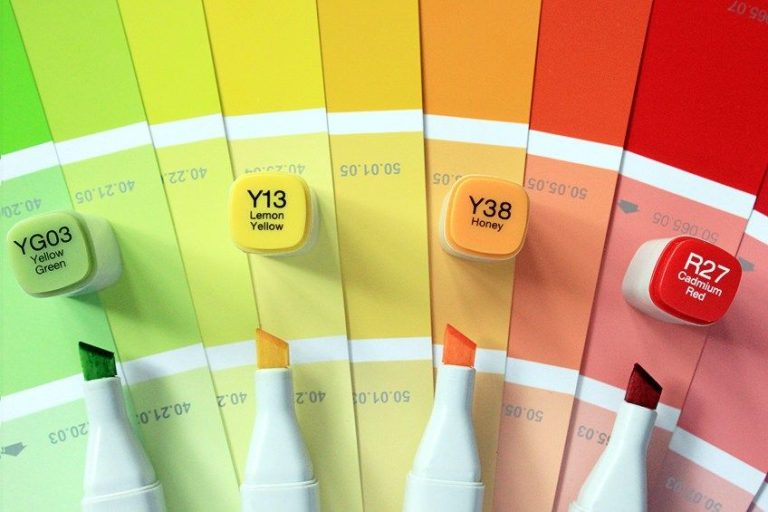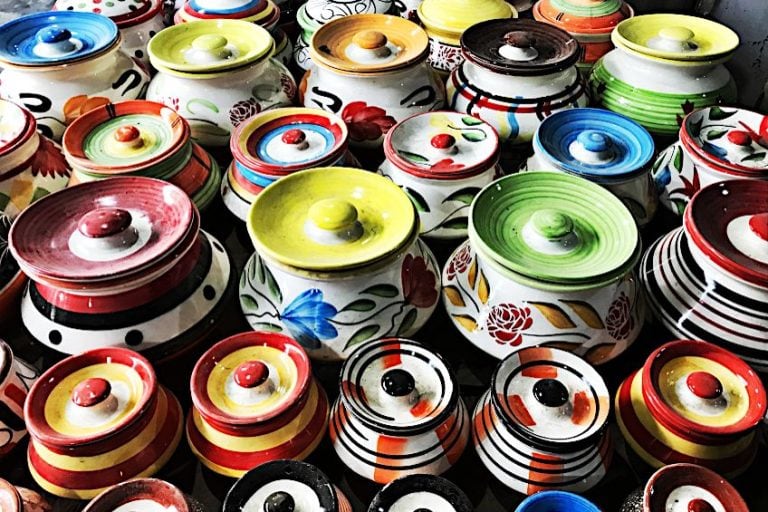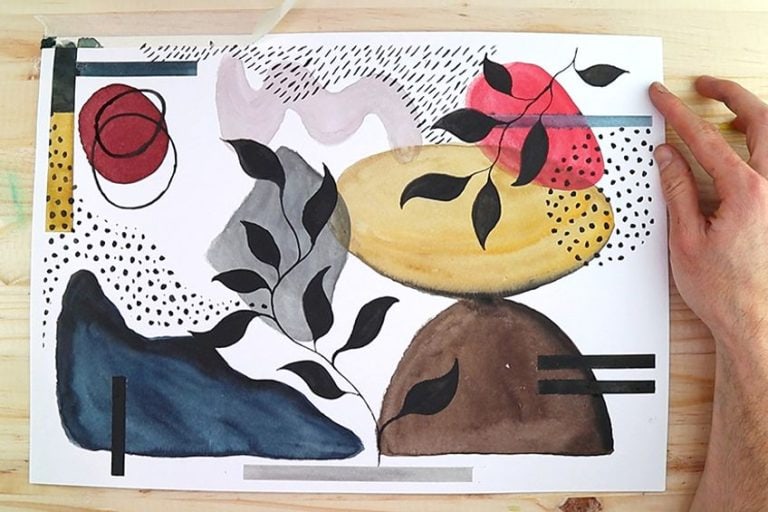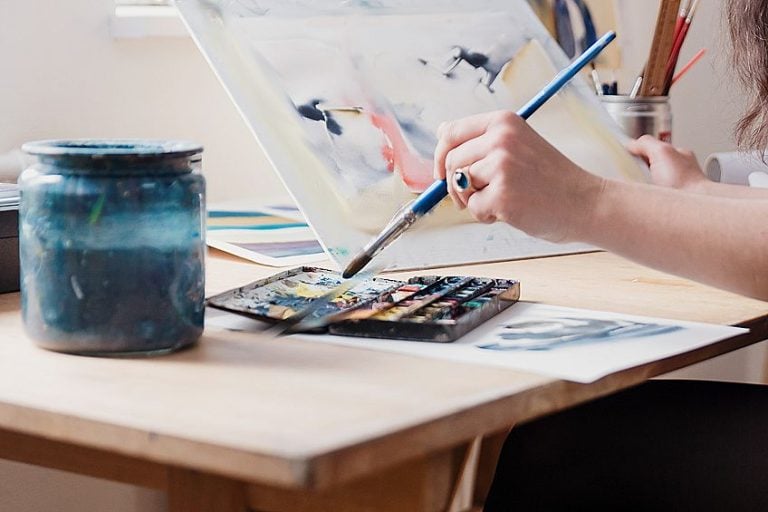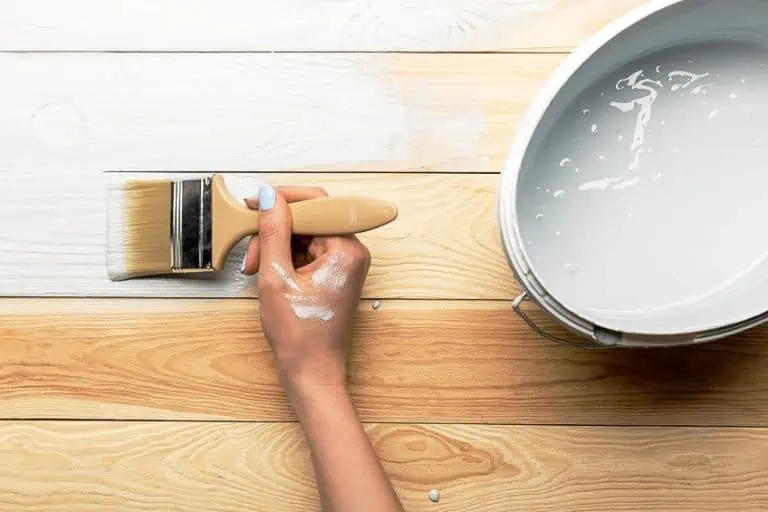How Long Does Oil Paint Take to Dry – Your Complete Guide
This post may contain affiliate links. We may earn a small commission from purchases made through them, at no additional cost to you.
Leo Tolstoy said, “All the beauty of life is made up of light and shadow”. This duality is as present in art as it is in life and is reflected in both the finished piece and the creative process that led to it. The process is naturally characterized by joys as well as frustrations. The joy of oil paint as a medium is that it offers flexibility and the opportunity to experiment and manipulate the paint. The frustration is, of course, the long drying times. This article is a guide for dealing with this frustration and getting the most joy out of the process.
Table of Contents
- 1 Oil Paint Drying Times: The Whys, the Hows and Finding Joy in the Process
- 2 Why Does Oil Paint Take Long to Dry?
- 3 How Long Does it Take for Oil Paint to Dry?
- 4 How to Tell if an Oil Paint Layer is Completely Dry
- 5 Embrace the Time: Nothing is Wasted in the Waiting
- 6 How to Make Oil Paint Dry Faster
- 6.1 Paint in a Well-Lit, Well-Ventilated Area
- 6.2 Opt for Warm Temperatures
- 6.3 Use Faster Drying Colours
- 6.4 Use Linseed Based Oil Paint Only
- 6.5 Apply Initial Layers Using Acrylic Paint
- 6.6 Use Alkyd Paint
- 6.7 Ensure that Your Paint Surface is Absorbent
- 6.8 Use a Chemical Drying Agent
- 6.9 Apply Thinner Layers of Paint
- 6.10 Golden Rule: Thick over Thin
- 7 Quick Tips
- 8 Frequently Asked Questions
Oil Paint Drying Times: The Whys, the Hows and Finding Joy in the Process
The drying times of oil paint is a frustration that many artists experience. Those who have chosen to stick with the medium because of its beautiful, rich qualities, have taken the time to learn and understand the medium. They have also found ways to ease, get around or, in some cases, to simply embrace the frustrations as part of the process.
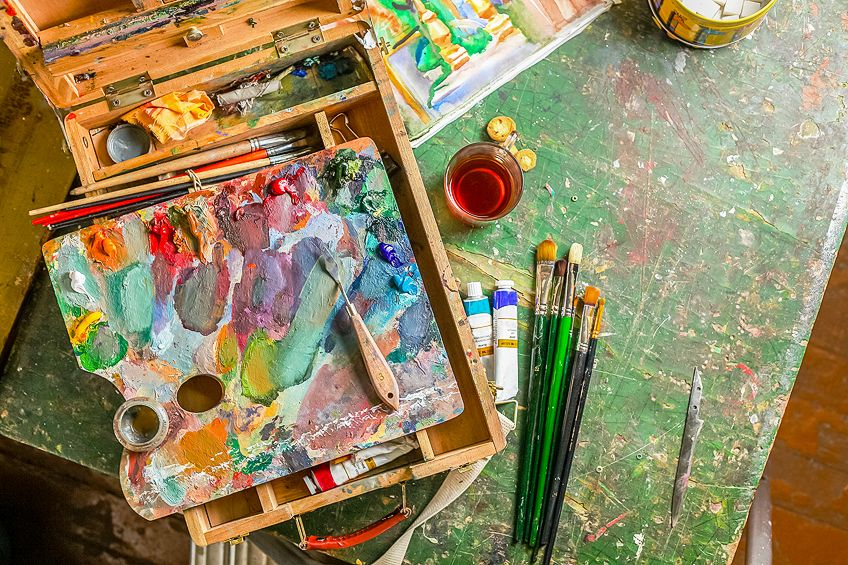
Why Does Oil Paint Take Long to Dry?
It is always good to have an understanding of the medium with which you are working. This article will answer the question above but also help you to embrace all the qualities of oil paint and make the best use of the medium.
Properties
Unlike the faster-drying watercolor and acrylic mediums which are water-based, oil paint is (surprise-surprise!) oil-based. It is made up of natural oil and pigments (usually non-toxic). These pigments are made from either synthetic solids or naturally occurring minerals or other organic substances. It follows then that the drying process of this unique medium would also be quite different.
Drying Process
Watercolors and acrylics dry through the process of evaporation. The water in these mediums evaporates from the canvas, making for a relatively quick drying time. On the other hand, oil paint, due to its properties, dries through a chemical process called oxidation. This occurs when the wet paint comes into contact with oxygen, causing it to react and harden.
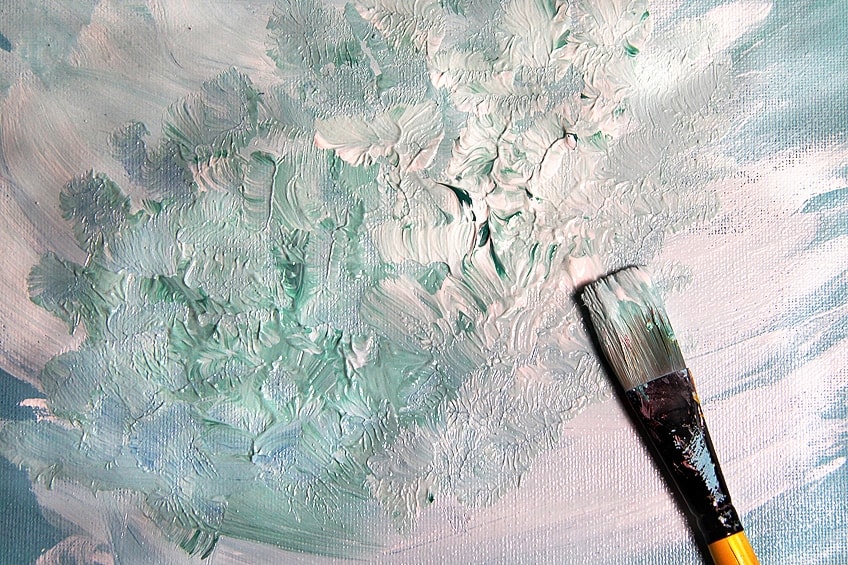
How Long Does it Take for Oil Paint to Dry?
There is no straight answer to this question. Oil paint can take anywhere between one day to a few weeks or months or even years to dry. Many factors influence drying time. Some are out of your control while others can be adjusted to manipulate to change drying time. The influencing factors include:
- Climate: Humidity and cold weather have adverse effects on drying time. A warm, dry climate creates ideal conditions for this process.
- Wind: This also optimizes drying conditions.
- Brand: Different oils are used in different brands of oil paint. Some of these oils dry slower than others which therefore influences drying time.
- Age: Sometimes, a paint tube might have lain in-store for quite some time, perhaps with a damaged seal, before being sold. The oxidation process might have already started, leading to the paint drying quicker on the canvas than if a newer paint was used.
- Color: Some color pigments take quicker to dry than others
- Thickness: Drying time depends on the number and thickness of the paint layers.
- Surface: An absorbent, rather than a non-absorbent surface makes for quicker drying.
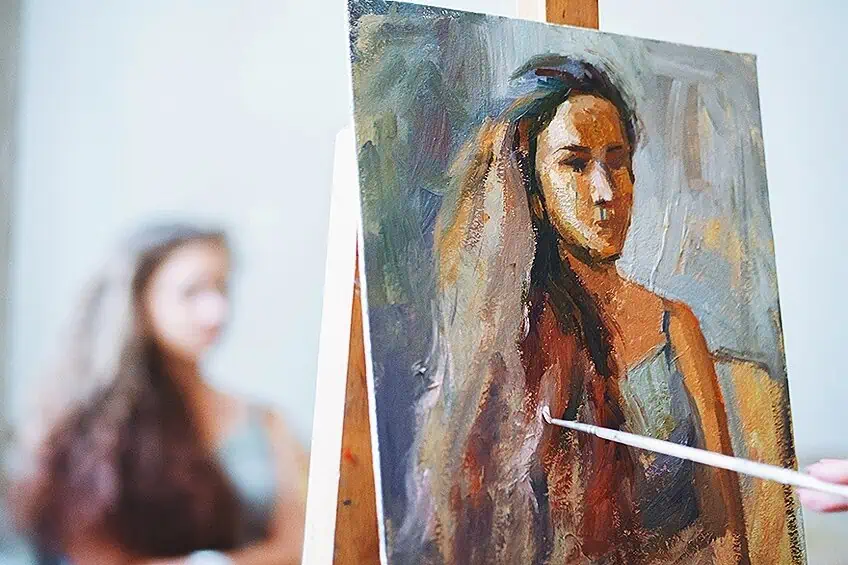
How to Tell if an Oil Paint Layer is Completely Dry
Adding the next layer of paint or finishing with your coat of varnish before the previous layer is completely dry will create numerous problems with your painting in the years to come. But it is sometimes difficult to tell if your paint is dry. Dry to the touch does not necessarily mean that the paint is dry.
An effective way to check if your paint has completely dried is to use a razor blade. Simply hold the blade flat against the painting surface, angled towards yourself. Using very light pressure start to scrape the paint surface. This will remove some of the paint but the idea is to see how the paint comes away from the surface.
If the paint comes off in a powdery consistency that is your sign that the paint has dried. If the paint comes away like string or thread, the paint is still wet. Wait another week and repeat this simple test until your canvas is completely dry and ready for its next layer. You can perform this same test with your thumbnail but remember to maintain very light pressure.
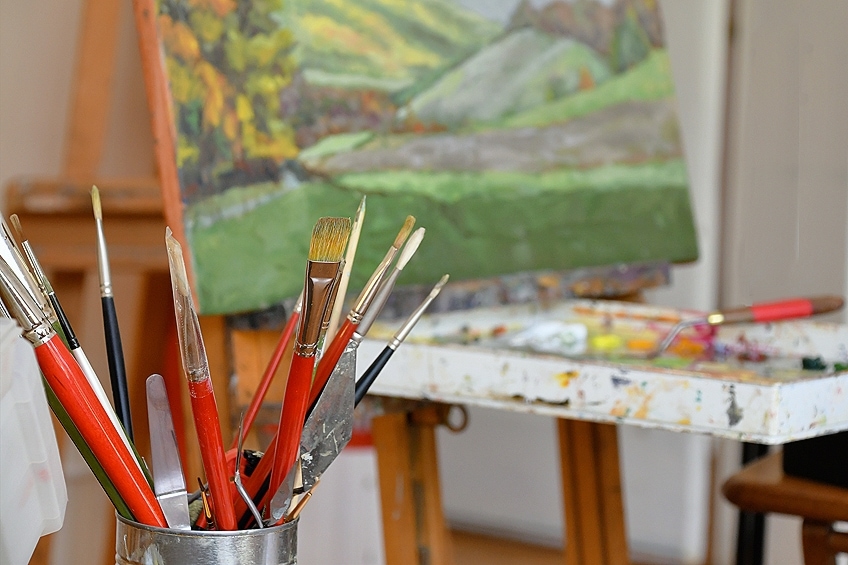
Embrace the Time: Nothing is Wasted in the Waiting
Some people might feel that precious time is wasted while waiting for paint layers to dry. But this is certainly not the case. There are many things you can do, not only to keep you busy but to keep you productive while you wait out the drying process.
Having two or more paintings going at the same time is an effective time-saver. This will enable you to work on one painting while you wait for another’s paint layers to dry, maintaining your creative momentum. If you prefer to focus on one project at a time, here are a few other activities you can do during this time:
- Preliminary sketches
- Preparing canvases
- Photographing finished pieces
- Marketing and other needful administrative tasks
- Cleaning up your studio
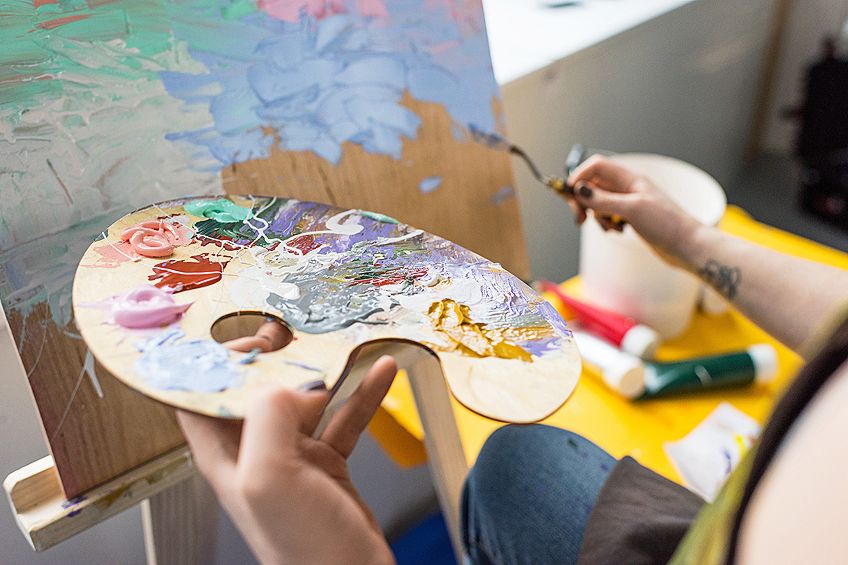
How to Make Oil Paint Dry Faster
While some of the factors mentioned above are not in your control, there are many that you do have control over. Making adjustments in these areas will result in a significant increase in the drying time of your oil paintings. Some ways in which you can speed up drying times are detailed below and summarised as follows:
- Paint in a well-lit, well-ventilated area, but avoid humid conditions.
- Opt for warm temperatures, but avoid extreme heat.
- Use faster-drying colors, especially in your base coat.
- Use paints containing linseed oil only.
- Apply initial layers using acrylic paint.
- Use alkyd paint, which is the same as oil paint but dries overnight.
- Ensure that your paint surface is absorbent, by using the right primer.
- Use a chemical drying agent in the initial layers to speed things up.
- Apply thinner layers of paint using different techniques or solvents
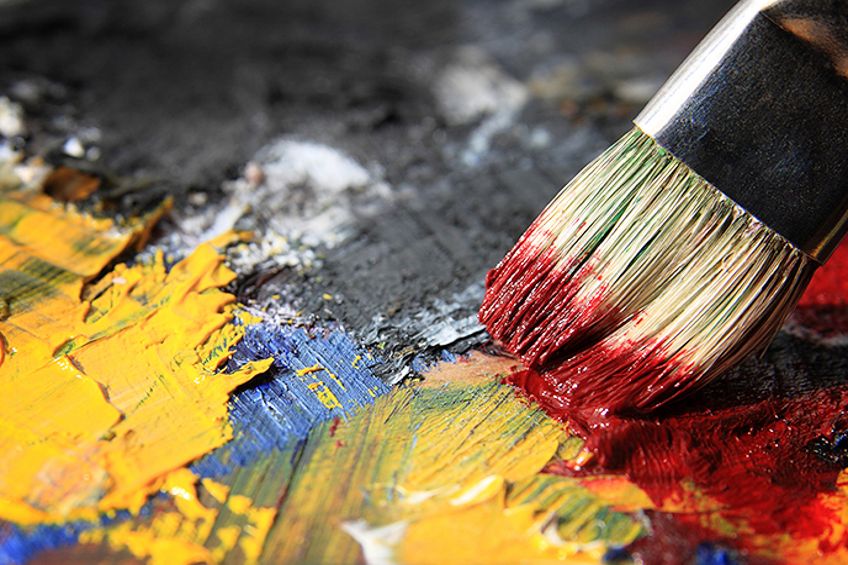
Paint in a Well-Lit, Well-Ventilated Area
This can be in a shady spot outdoors or indoors with open windows. If it is humid outside, have your windows closed and make use of a strong fan and a dehumidifier if need be. Good airflow facilitates the oxidation process and will speed up the drying of your paint. Natural light also helps this process.
Opt for Warm Temperatures
As mentioned above, cold temperatures are not conducive to drying oil paint. Conversely, using heat can speed up the drying process considerably. But be careful with this as too much heat will cause cracking or yellowing in the paint. The best way to achieve optimum drying temperatures is to simply place your painting in a window in a bright, sunlit room.
Alternatively, you can adjust your thermostat to a higher temperature overnight or during the day if you can. Using other heat tools, like heat guns or hairdryers without proper guidance in these techniques, risks damaging your painting. It is therefore advisable to wait that extra few days.
Use Faster Drying Colours
We have touched on this as well and it is something that can make all the difference in the drying process. Because of the different materials used to create different colors, each color has a different chemical makeup and this affects the oxidation process and therefore the speed of drying.
Using faster drying colors for your initial layer(s) of paint is an effective way to assist in the drying process of subsequent layers. Never use slow drying colors for your base layers. Also, remember that applying a quick-drying color over a slow drying color can cause cracking.
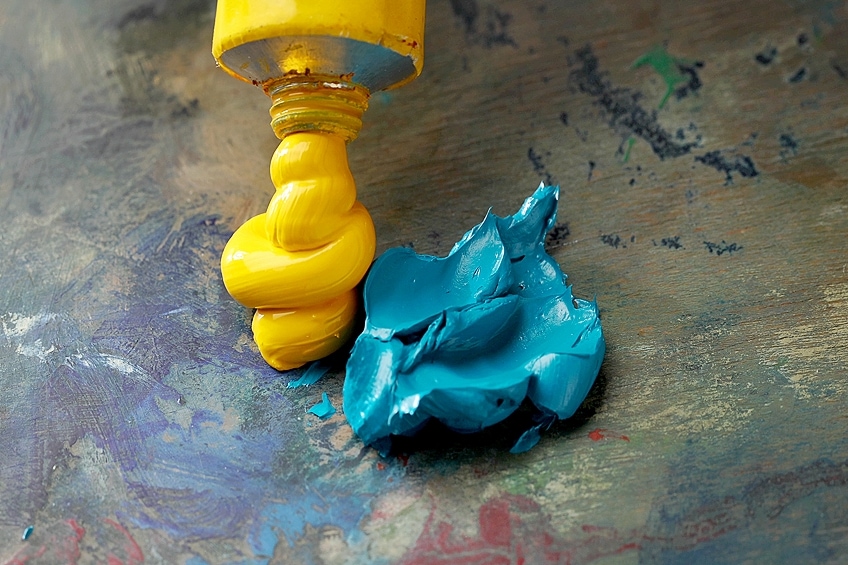
You can also use faster drying colors for the majority of your painting and especially when applying thicker layers of paint. Slow drying colors can be used for thinner layers and in smaller amounts or you can simply avoid them altogether.
Knowing which colors dry quicker, when, and how to use them comes with experience and experimentation. This also depends on the brand you are using. However, it is helpful to have a general guide on which you can build your knowledge of quick-drying pigments and this is laid out below:
Slow Drying Colors
- Most reds including Alizarin crimson
- Cadmium colors (red, yellow, orange)
- Blacks
- Sap green
- Zinc White
- Vermilion
- Vandyke brown
Fast Drying Colors
- Burnt Sienna
- Raw Sienna
- Burnt Umber
- Raw Umber
- Chrome Yellow and Red
- Cobalt Blue
- Prussian Blue
- Naples Yellow
- Manganese colors
- Colors containing lead such as Flake White or Cremnitz White
Use Linseed Based Oil Paint Only
A few different oils are used by manufacturers in producing oil paint. Common oils in oil paint include walnut oil, linseed oil, poppy oil, and safflower oil. Poppy oil dries the slowest and Linseed is the fastest drying of all the oils used in oil paint. So to help increase the drying time of your painting, stick with oil paints made with linseed oil.
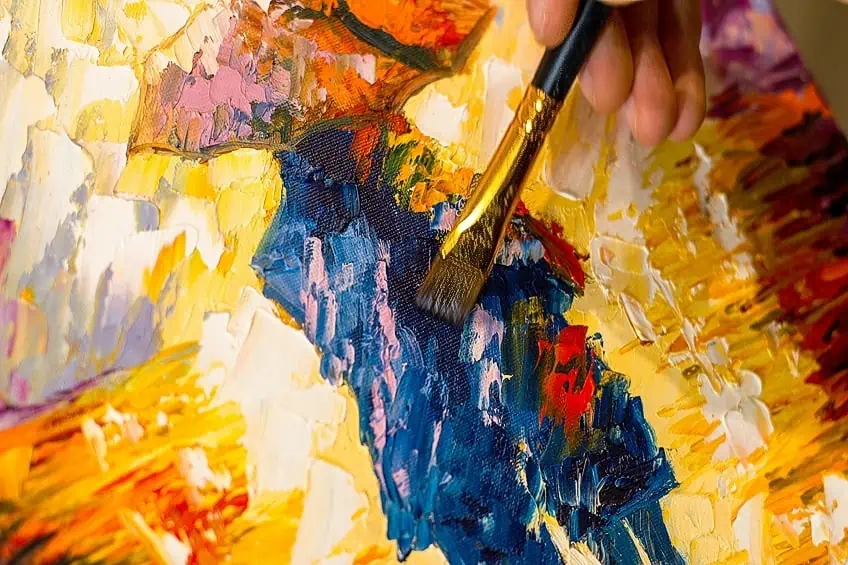
Apply Initial Layers Using Acrylic Paint
As mentioned before, acrylic is water-based and therefore dries far quicker than any oil paint. Using acrylic paint will not necessarily speed up the drying time of your oil paint but using it for your initial layers will speed up the painting process as a whole. Instead of waiting a day or two for an oil paint layer to dry, you only need to wait a few minutes for your acrylic base coat to dry before applying your next layer.
Many artists, however, prefer not to incorporate acrylic at all because it tends to look darker once dry and also gives off a plastic sheen. The choice, of course, is yours but we recommend this method for beginners.
Just remember that water-based paint cannot be applied over oil-based paint. So if you are using the acrylic base layer method, ensure that your canvas is primed with acrylic paint and not with an oil-based paint.

Use Alkyd Paint
Alkyd paint is oil paint that is made from a fast-drying oil and therefore takes about a day to dry. This paint is found in many studios since it is just as versatile as oils and has the same workable, buttery consistency that artists enjoy. You can use alkyds as an alternative medium to traditional oils or you can incorporate them together with your traditional oils. Although they are not as fast drying as acrylics, a painting that has been done solely in alkyds will dry overnight.
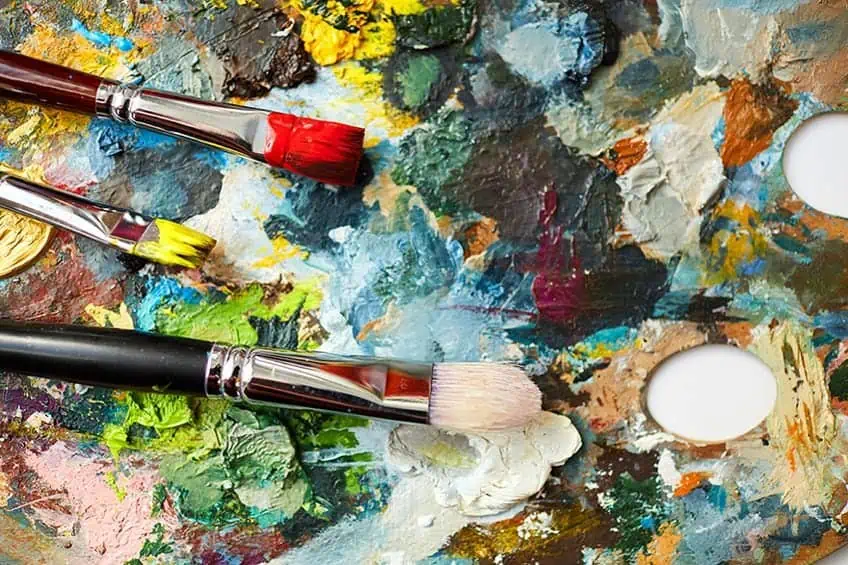
Using oil paint in fast-drying colors and alkyd paint in slow drying colors is also an effective way to reduce the drying time. Another way to speed up the drying time of your oils is to simply replace your most frequently used colors with alkyds.
Alkyd paint dries with a similar look to acrylic paints – with a slightly darker, plastic-like finish. Also, remember that alkyd paint is less flexible than traditional oil paint so avoid painting alkyds over oils as this may cause cracking.
Ensure that Your Paint Surface is Absorbent
An absorbent surface will always aid the drying process. If you are a beginner, your first choice is likely to be a universal-primed canvas from your local craft store. This is a mistake that will result in very long drying times. So here are a few options to consider when searching for the perfect canvas for your oil painting project:
Alkyd-Primed Surfaces
While alkyd is a great alternative to traditional oil paints, it is also great for priming your canvas. This substance is more absorbent than lead, titanium, or oil-based primers. A surface primed with alkyd may not allow for your oil paint to spread easily but it will cause it to soak into the canvas more and to dry quicker.
Gesso-Primed Surfaces
Two options are available in this category. Traditional gesso, due to its brittle nature, is only suitable for rigid surfaces such as wood. Acrylic gesso is essentially an acrylic primer and can be used to prime ordinary canvas to create an absorbent surface that will help your oil paint to dry faster.
Lead-Primed Linen
This type of surface is non-absorbent. But oil paint applied to this surface will still dry quicker than titanium oil or universal primed canvas. If you enjoy doing wet-on-wet painting, this surface is ideal. Just be aware that lead is toxic and is therefore pricey and difficult to find. Yellowing is also a downside to using a lead primed surface.
Use a Chemical Drying Agent
This is another good way to help your oil paint to dry quicker. You can use a drying agent by adding a little into your oil paint mixture before painting it on your canvas. However, due to their oil-like composition, drying agents should never be used in your base coat but rather in your subsequent layers. Remember to give your brushes a good clean after using a drying medium as neglecting to do so will cause them to harden.
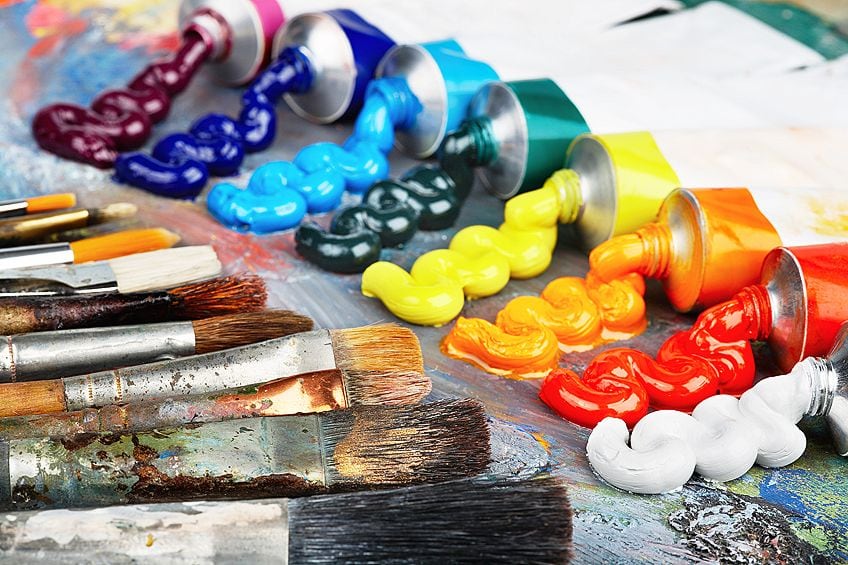
Apply Thinner Layers of Paint
The thicker the paint, the slower it takes to dry. This is because there is not even enough exposure of the paint to oxygen, which hinders or slows the oxidation process. Applying your paint in thinner layers is therefore another great way to reduce drying times.
There are several ways in which you can thin your oil paint. One simple way is to apply the paint straight from the tube (without any other additive), ‘scrubbing’ it thinly onto the canvas using a coarse bristle brush.
You can also use artist-grade paint thinners or solvents to thin your oil paint. These are usually made from turpentine or mineral spirit. Using solvents to thin your paint can make it dry too quickly which may cause cracking. This is why you should use solvents in your initial layer only. Also, be aware that any oil-based thinners will reduce the drying time of your paint.
Golden Rule: Thick over Thin
When applying your paint and thinning your layers in whatever method you have chosen, always follow the fat over lean/thick over thin principle to facilitate the drying process. This means that your initial layers should be thin with the lowest oil content and only your subsequent layers may be thicker, with the thickest layer being applied last.
Quick Tips
- Paint on an even surface: Paint collected in cracks and crevices on a canvas takes longer to dry. Ensure that your surface is prepped and primed properly.
- Create fewer layers: This will speed up the oxidation process and reduce the number of times you will need to wait for a layer to dry.
- Switch brands: Often one color in a certain brand will dry quicker than the same color in a different brand. Do not be afraid to try a new brand and experiment to establish what works best for you.
- Embrace the long drying times: There are good reasons you have chosen oils. When your patience runs a little thin and you start to feel frustrated, remind yourself of these reasons – the simple joy you get from using this flexible medium and the vibrant results you envision.
Take a look at our oil paint drying webstory here!
Frequently Asked Questions
Does Oil Paint Ever Dry?
Yes, oil paint does eventually dry. The oxidation process that causes the hardening of the medium when exposed to the air is inevitable. It is just the length of this process, which is dependent on a multiple of variables, that sometimes makes it seem like oil paint will never dry.
Does Oil Paint Dry Faster with a Hair Dryer?
As mentioned above oil paint “dries” through the process of oxidation, not through evaporation as with water-based paints. The heat from a hair dryer will cause evaporation of water from the canvas but it will not speed up the drying of oil paints and may even create cracks in your painting.
Does Hairspray Dry Oil Paint?
Hairspray is ideally used for pencil or charcoal drawings as an alternative to fixing spray. Using this on your oil painting will not aid the drying process. Hairspray is more likely to hinder the oxidation process and cause cracks in your painting.
In 2005, Charlene completed her wellness degrees in therapeutic aromatherapy and reflexology at the International School of Reflexology and Meridian Therapy. She worked for a company offering corporate wellness programs for several years before opening her own therapy practice. In 2015, she was asked by a digital marketer friend to join her company as a content creator, and it was here that she discovered her enthusiasm for writing. Since entering the world of content creation, she has gained a lot of experience over the years writing about various topics such as beauty, health, wellness, travel, crafting, and much more. Due to various circumstances, she had to give up her therapy practice and now works as a freelance writer. Since she is a very creative person and as a balance to writing likes to be active in various areas of art and crafts, the activity at acrylgiessen.com is perfect for her to contribute their knowledge and experience in various creative topics.
Learn more about Charlene Lewis and about us.

